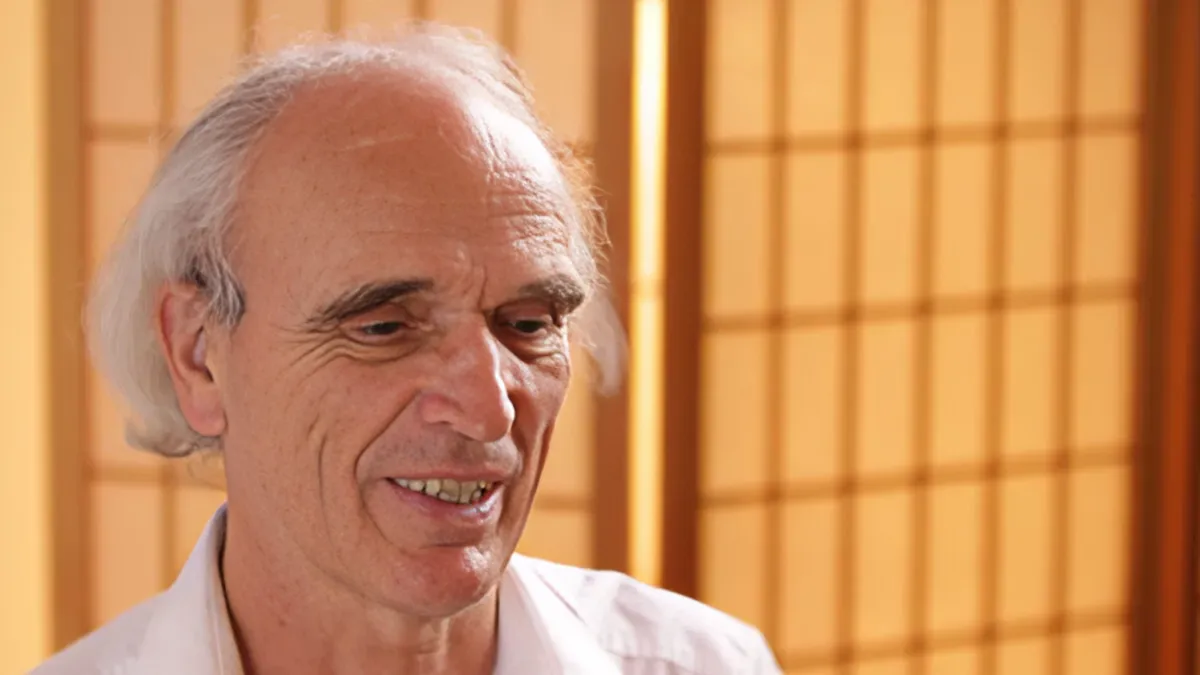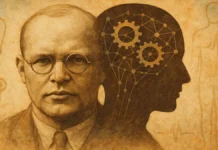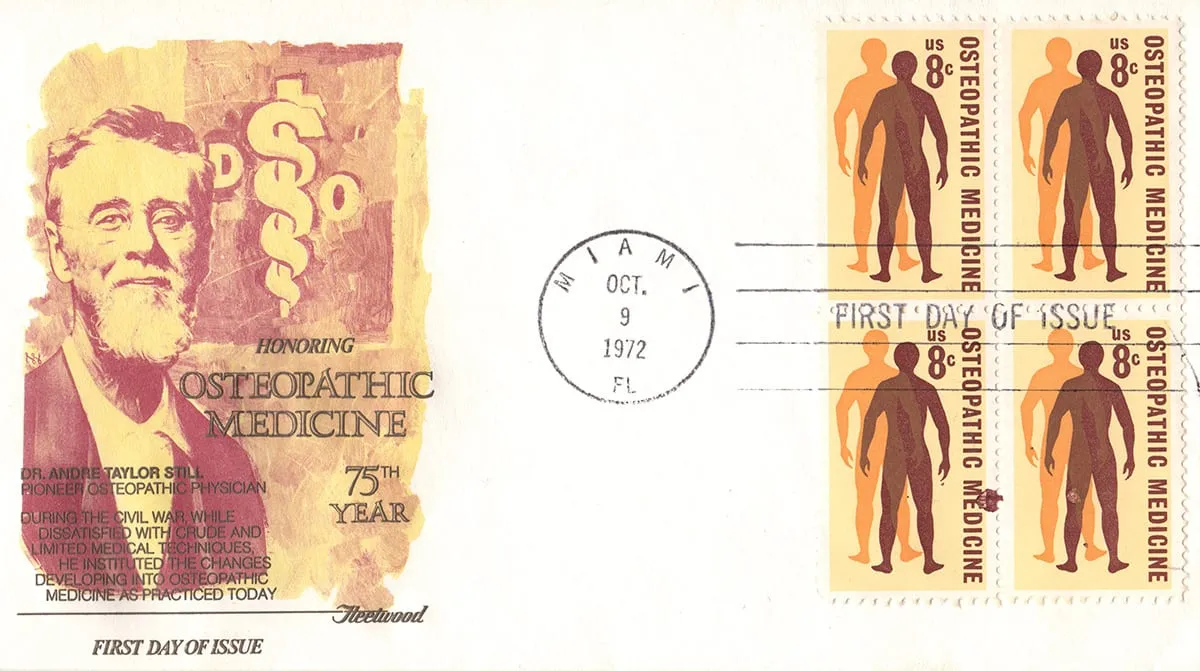Introduction
Jean-Pierre Barral (1934-2017) made profound contributions to osteopathy, particularly through his pioneering work in visceral osteopathy, which has significantly impacted healthcare practices worldwide. Barral’s innovative techniques and dedication to understanding the complex relationships between internal organs and overall body function have cemented his legacy as a pivotal figure in modern osteopathic medicine. His work continues to influence and inspire practitioners, driving forward a more holistic and integrative approach to patient care.
Overview of Jean-Pierre Barral’s Contribution to Osteopathic Medicine
Jean-Pierre Barral, along with his collaborator Alain Croibier, co-founded visceral osteopathy—a branch of osteopathy focused on the manipulation and treatment of internal organs. Barral’s innovative techniques in visceral manipulation have provided osteopathic practitioners with effective tools for diagnosing and treating a wide range of conditions related to organ dysfunction and structural imbalances. Through extensive research and clinical practice, Barral developed methods that allow practitioners to assess and treat visceral restrictions, enhancing the body’s natural healing processes.
Significance of Visceral Osteopathy in Healthcare
Visceral osteopathy emphasizes the interconnectedness of the body’s structure and function, recognizing that dysfunction in internal organs can manifest as musculoskeletal pain and vice versa. By addressing visceral restrictions and promoting organ mobility, Barral’s techniques aim to restore health and improve overall well-being. This approach is particularly valued for its holistic nature, complementing conventional medical treatments and contributing to a more integrated approach to patient care. Visceral osteopathy has been shown to be effective in managing chronic pain, digestive disorders, and other conditions that conventional medicine sometimes struggles to address comprehensively. Barral’s legacy lives on through the continued practice and evolution of visceral osteopathy, benefiting countless patients and advancing the field of osteopathic medicine.
Early Life and Education
Background and Early Influences
Jean-Pierre Barral was born in 1934 in Grenoble, France. His early years were marked by a deep curiosity about the human body and its functions, a fascination that would later define his career. Growing up in a family that valued education and intellectual pursuits, Barral was encouraged to explore his interests in science and medicine from a young age. His father, a physician, and his mother, a nurse, provided a nurturing environment that stimulated his passion for understanding the complexities of health and disease.
As a child, Barral was captivated by the natural world and spent much of his time observing and studying the intricacies of biological systems. This early exposure to the sciences laid the foundation for his future endeavors. His formative years were also influenced by the holistic approach to medicine practiced by his parents, which emphasized the interconnectedness of the body and mind. This perspective would later become a cornerstone of his work in osteopathy.
Academic and Professional Training
Barral’s formal education began in the local schools of Grenoble, where he excelled academically. His exceptional performance in science subjects earned him a place at the prestigious University of Grenoble, where he pursued a degree in physical therapy. During his time at university, Barral was introduced to the principles of osteopathy, which piqued his interest due to its holistic approach to health. He was particularly drawn to the idea that the body has an inherent ability to heal itself, a concept that resonated deeply with his early influences.
After completing his degree in physical therapy, Barral continued his education at the European School of Osteopathy in Maidstone, England. Here, he received comprehensive training in osteopathic techniques, including structural and cranial osteopathy. The rigorous curriculum and hands-on training provided him with a solid foundation in the fundamental principles of osteopathy. During this period, Barral was mentored by several prominent osteopaths who recognized his potential and encouraged him to explore new frontiers in the field.
One of the pivotal moments in Barral’s education was his encounter with visceral manipulation, a technique that involves the manual treatment of internal organs. Intrigued by the potential of this approach, Barral delved deeper into the study of visceral anatomy and its relationship to overall health. His investigations led him to the realization that many musculoskeletal issues could be traced back to dysfunctions in the internal organs. This insight spurred him to develop his own techniques for assessing and treating visceral restrictions.
Barral’s academic journey did not end with his formal education. He was a lifelong learner, constantly seeking to expand his knowledge and refine his skills. He attended numerous workshops and seminars, both as a participant and as a lecturer, sharing his insights with fellow practitioners. His dedication to continuous learning and innovation earned him a reputation as a pioneer in the field of osteopathy.
In addition to his clinical practice, Barral was also an accomplished author and educator. He wrote several influential books on visceral manipulation, which have been translated into multiple languages and are used as textbooks in osteopathic schools around the world. His writings reflect his deep understanding of the human body and his commitment to advancing the practice of osteopathy.
Jean-Pierre Barral’s early life and education were characterized by a relentless pursuit of knowledge and a profound dedication to improving patient care. His background and training provided the foundation for his groundbreaking work in visceral osteopathy, which has had a lasting impact on the field and continues to inspire practitioners worldwide.
Development of Visceral Osteopathy
Collaboration with Alain Croibier
Jean-Pierre Barral’s groundbreaking work in visceral osteopathy was significantly advanced through his collaboration with Alain Croibier. Croibier, an osteopath and physical therapist, shared Barral’s passion for exploring the body’s internal systems and their impact on overall health. Their partnership began in the early 1980s, when they both recognized the need for a deeper understanding of how internal organs influence musculoskeletal function. Together, they embarked on a journey to develop techniques that would allow osteopaths to assess and treat internal organ dysfunctions effectively.

Their collaboration was marked by rigorous research, clinical experimentation, and a shared commitment to advancing osteopathic practice. Barral and Croibier’s combined expertise enabled them to refine and validate their techniques, ensuring they were both safe and effective. This partnership not only enhanced their individual skills but also led to the establishment of a new branch of osteopathy that has since been embraced by practitioners worldwide.
Founding Principles of Visceral Osteopathy
The founding principles of visceral osteopathy are rooted in the holistic understanding that the body functions as an interconnected system. Barral and Croibier posited that dysfunctions in internal organs could lead to structural imbalances and musculoskeletal pain. Conversely, structural issues could also affect organ function. This bidirectional relationship underscored the need for a treatment approach that addressed both the visceral and musculoskeletal systems.
Key principles of visceral osteopathy include:
- Interconnectedness: Recognizing the intricate connections between internal organs and the musculoskeletal system, and understanding that issues in one area can affect the other.
- Mobility and Motility: Emphasizing the importance of both the physical movement (mobility) and the inherent rhythmic motion (motility) of internal organs for maintaining health.
- Holistic Treatment: Adopting a comprehensive approach that considers the whole body, rather than focusing on isolated symptoms or conditions.
- Manual Therapy: Using hands-on techniques to assess and treat restrictions in the visceral system, promoting the body’s natural healing processes.
Key Innovations and Techniques
Barral and Croibier introduced several key innovations and techniques that have become central to visceral osteopathy. One of their most notable contributions is the development of precise palpation skills to detect and assess visceral restrictions. This involves using gentle manual pressure to identify areas where internal organs may be restricted in their movement or function.
Key techniques include:
- Visceral Manipulation: A hands-on approach that involves the gentle manipulation of internal organs to restore their natural mobility and motility. This technique aims to alleviate restrictions and improve the function of the organs and related systems.
- Listening Techniques: These involve palpating specific points on the body to detect subtle changes in tissue texture and temperature, which can indicate underlying visceral dysfunctions.
- Neural Manipulation: Focusing on the treatment of the nervous system and its relationship with the visceral and musculoskeletal systems. This technique aims to address nerve restrictions that may contribute to pain and dysfunction.
- Vascular Manipulation: Techniques that target the blood vessels associated with internal organs to improve circulation and support the overall health of the visceral system.

These techniques have proven effective in treating a wide range of conditions, including chronic pain, digestive disorders, respiratory issues, and gynecological problems. By addressing the root causes of these conditions, rather than just their symptoms, visceral osteopathy offers a holistic and integrative approach to patient care.
Jean-Pierre Barral’s collaboration with Alain Croibier and their development of visceral osteopathy have had a profound impact on the field of osteopathic medicine. Their innovative techniques and founding principles have provided practitioners with powerful tools to enhance patient outcomes, advancing the practice of osteopathy and improving the quality of life for countless individuals.
Clinical Applications of Visceral Osteopathy
Diagnosing Organ Dysfunction
Visceral osteopathy, pioneered by Jean-Pierre Barral and Alain Croibier, has revolutionized the approach to diagnosing organ dysfunction. This method relies heavily on the practitioner’s palpation skills to detect restrictions and irregularities within the body’s visceral system. Unlike conventional diagnostics, which often focus on the site of pain or discomfort, visceral osteopathy considers the interconnectedness of the entire body. By palpating the abdomen and other areas, osteopaths can identify regions where organs may be restricted in their movement or exhibiting abnormal motility patterns.
Practitioners use techniques like “listening” to detect subtle changes in tissue texture, temperature, and tension, which can indicate underlying organ dysfunction. For example, a restriction in the liver’s movement might be detected by changes in the surrounding tissues, which could manifest as shoulder pain or digestive issues. This holistic approach allows osteopaths to uncover hidden causes of musculoskeletal pain and systemic health problems, providing a more comprehensive diagnosis that considers the whole body.
Treating Structural Imbalances
One of the core tenets of visceral osteopathy is the understanding that organ dysfunction can lead to structural imbalances in the body, and vice versa. For instance, restrictions in the kidneys can affect the alignment and mobility of the spine, leading to lower back pain. Similarly, issues with the stomach or intestines can impact the diaphragm and rib cage, contributing to thoracic and lumbar discomfort.
Visceral osteopathy addresses these imbalances by restoring the natural mobility and motility of the internal organs. Techniques such as visceral manipulation involve the gentle manual adjustment of the organs to release restrictions and improve their function. By treating the root cause of structural imbalances, practitioners can alleviate musculoskeletal pain and enhance overall body mechanics.
A common example is the treatment of chronic low back pain. While conventional treatments might focus solely on the spine and surrounding muscles, a visceral osteopath would also assess and treat the kidneys, intestines, and other abdominal organs to ensure they are not contributing to the dysfunction. This comprehensive approach often leads to more effective and longer-lasting relief for patients.
Enhancing Natural Healing Processes
Visceral osteopathy not only addresses existing dysfunctions but also promotes the body’s natural healing processes. By improving the mobility and motility of internal organs, practitioners help enhance the circulation of blood, lymph, and other bodily fluids. This increased circulation supports the delivery of nutrients and oxygen to tissues while facilitating the removal of waste products, thereby creating an optimal environment for healing.
The gentle manipulation of organs also stimulates the autonomic nervous system, which plays a crucial role in regulating the body’s stress response and promoting relaxation. This can have profound effects on overall health, as chronic stress is a major contributor to many diseases and dysfunctions. By reducing stress and enhancing parasympathetic activity, visceral osteopathy supports the body’s innate ability to heal and maintain balance.
Moreover, visceral osteopathy can be particularly beneficial for chronic conditions that conventional medicine often finds challenging to treat. For example, patients with irritable bowel syndrome (IBS) or chronic pelvic pain may experience significant improvements through visceral manipulation, as these techniques address the underlying visceral restrictions and promote better organ function.
Impact on Healthcare Practices
Holistic Approach to Patient Care
Jean-Pierre Barral’s development of visceral osteopathy has profoundly influenced healthcare practices by promoting a holistic approach to patient care. Unlike conventional medicine, which often focuses on treating specific symptoms or isolated conditions, visceral osteopathy considers the interconnectedness of the entire body. This holistic perspective acknowledges that dysfunctions in internal organs can manifest as musculoskeletal pain, and structural issues can, in turn, affect organ function.
By incorporating visceral manipulation into their practice, osteopaths are better equipped to address the root causes of various health issues rather than merely alleviating symptoms. This approach not only enhances the effectiveness of treatments but also promotes long-term health and well-being. Patients benefit from a comprehensive assessment that takes into account their entire medical history, lifestyle, and the interrelationships between different bodily systems. This thorough understanding allows practitioners to develop personalized treatment plans that are tailored to the unique needs of each patient, resulting in more effective and enduring outcomes.
Complementing Conventional Medical Treatments
Visceral osteopathy does not replace conventional medical treatments but rather complements them, offering an integrative approach to healthcare. Many patients who seek visceral osteopathic treatment do so in conjunction with other medical therapies. For instance, a patient undergoing treatment for chronic gastrointestinal issues might also receive visceral manipulation to address underlying restrictions and enhance the effectiveness of their conventional treatments.
This integrative approach is particularly beneficial for managing chronic conditions that are often difficult to treat with conventional methods alone. By improving organ mobility and function, visceral osteopathy can enhance the body’s response to medical treatments, reduce pain, and improve overall health. For example, patients with chronic back pain often find that incorporating visceral osteopathy into their treatment regimen helps to address underlying issues related to organ dysfunction, leading to more significant and sustained relief.
The complementary nature of visceral osteopathy also extends to post-surgical recovery. Patients recovering from abdominal surgeries, for instance, can benefit from visceral manipulation to reduce adhesions, improve mobility, and accelerate the healing process. This integrative approach ensures that patients receive comprehensive care that addresses all aspects of their health, facilitating better outcomes and improved quality of life.
Case Studies and Success Stories
Numerous case studies and success stories highlight the impact of visceral osteopathy on patient care. One notable example involves a patient with chronic lower back pain that had not responded to conventional treatments. Upon evaluation, the osteopath discovered restrictions in the patient’s kidneys and surrounding tissues. Through a series of visceral manipulation sessions, the restrictions were released, leading to significant improvement in the patient’s back pain and overall mobility.
Another success story involves a patient suffering from irritable bowel syndrome (IBS). Traditional treatments had provided limited relief, but visceral osteopathy offered a new approach. By addressing restrictions in the intestines and related structures, the osteopath was able to alleviate the patient’s symptoms, resulting in improved digestion and reduced abdominal discomfort. This case exemplifies how visceral osteopathy can offer solutions for conditions that conventional medicine often finds challenging to treat comprehensively.
A particularly compelling case involved a woman experiencing chronic pelvic pain after childbirth. Despite multiple consultations with various specialists, her pain persisted. Through visceral manipulation, the osteopath identified restrictions in her uterus and surrounding ligaments. Treating these areas led to a dramatic reduction in her pain and a restoration of her quality of life.
These case studies and countless others underscore the transformative potential of visceral osteopathy. By addressing the underlying causes of dysfunction, practitioners can achieve remarkable results, improving patients’ health and well-being in ways that conventional treatments alone may not accomplish.
Legacy and Continued Influence
Evolution of Visceral Osteopathy
Jean-Pierre Barral’s legacy is evident in the ongoing evolution of visceral osteopathy. His innovative techniques and holistic approach have become foundational elements of modern osteopathic practice. Over the years, these methods have been refined and expanded upon by practitioners worldwide, incorporating new insights and advancements in medical science. Visceral osteopathy has grown to address a broader range of conditions, extending its reach beyond musculoskeletal issues to include systemic and chronic diseases. This evolution has been driven by the continuous integration of research findings, clinical experiences, and technological advancements, ensuring that the practice remains relevant and effective in contemporary healthcare.
Barral’s work has also influenced other therapeutic modalities. Techniques initially developed for visceral osteopathy have been adapted for use in fields such as physical therapy, chiropractic care, and even traditional medicine. This cross-disciplinary adoption underscores the versatility and effectiveness of Barral’s approach, cementing his legacy as a pioneer in holistic health.
Training and Mentoring Future Practitioners
A significant aspect of Barral’s legacy lies in his commitment to training and mentoring future generations of osteopaths. Throughout his career, Barral emphasized the importance of education and knowledge sharing. He established numerous training programs and workshops, imparting his techniques and philosophies to thousands of practitioners worldwide. These educational initiatives have ensured that his methods are passed down and continually improved upon.

Barral authored several influential books and training manuals, which are widely used in osteopathic schools and training programs. His writings provide detailed descriptions of visceral manipulation techniques, case studies, and theoretical foundations, serving as invaluable resources for both novice and experienced practitioners. Furthermore, his teaching style, which combined practical demonstrations with theoretical explanations, has been adopted by many of his students, perpetuating his pedagogical legacy.
The Barral Institute, founded to honor his work, continues to offer advanced training in visceral manipulation and related techniques. The institute’s programs attract practitioners from various disciplines, fostering a multidisciplinary approach to healthcare that aligns with Barral’s holistic vision. This ongoing education and mentoring ensure that the principles of visceral osteopathy remain at the forefront of integrative medicine.

Global Reach and Ongoing Research
Jean-Pierre Barral’s influence extends globally, with practitioners in diverse regions adopting and adapting his techniques. The global reach of visceral osteopathy is a testament to its efficacy and adaptability across different healthcare systems and cultural contexts. Clinics and healthcare centers worldwide offer visceral manipulation as part of their integrative treatment programs, benefiting countless patients.
Ongoing research continues to validate and expand upon Barral’s work. Studies exploring the mechanisms and outcomes of visceral manipulation contribute to a growing body of evidence supporting its efficacy. Research initiatives often focus on quantifying the benefits of visceral osteopathy, such as improvements in organ function, pain reduction, and overall health outcomes. These studies are published in medical journals and presented at conferences, further integrating visceral osteopathy into mainstream medical discourse.
International collaborations and exchanges among osteopathic practitioners facilitate the sharing of knowledge and best practices. Conferences, symposiums, and online platforms provide venues for practitioners to discuss their experiences, present new findings, and explore innovative applications of visceral osteopathy. This collaborative spirit reflects Barral’s own approach to learning and discovery, ensuring that his legacy of curiosity and innovation continues to inspire future advancements.
Personal Reflections and Anecdotes
Testimonials from Colleagues and Patients
Jean-Pierre Barral’s impact on the field of osteopathy and on the lives of his colleagues and patients is profoundly captured in their testimonials. Many of his colleagues recall his dedication to innovation and education, often highlighting his relentless pursuit of knowledge and his willingness to share his insights with others.
Dr. Alain Croibier, Barral’s long-time collaborator, often speaks of Barral’s deep understanding of the human body and his unique ability to connect with patients. “Jean-Pierre had an extraordinary talent for listening—not just with his ears but with his hands and his heart. He could sense what a patient’s body was telling him and knew how to respond with precision and compassion,” Croibier reflects. He attributes much of his own success to Barral’s mentorship and innovative spirit.
Patients, too, have shared their transformative experiences with Barral’s treatments. Marie, a patient who suffered from chronic pelvic pain, recalls how traditional treatments failed to alleviate her discomfort until she met Barral. “His hands seemed to have a healing touch. After a few sessions, my pain diminished significantly. He didn’t just treat my symptoms; he addressed the root cause, and for that, I am forever grateful,” she recounts.
Another patient, John, who struggled with digestive issues for years, shares a similar story. “I had seen countless doctors and tried numerous medications, but nothing worked. Barral’s visceral manipulation techniques changed everything. He had this incredible ability to pinpoint the exact source of my discomfort and treat it effectively. His approach was both scientific and profoundly human.”
Memorable Moments and Milestones
Throughout his illustrious career, Jean-Pierre Barral achieved numerous milestones and experienced many memorable moments that have left a lasting impression on those who knew him. One such moment was the publication of his seminal work, “Visceral Manipulation,” which has become a cornerstone text in osteopathic education. The book’s publication marked a significant turning point in the field, providing practitioners with a comprehensive guide to Barral’s innovative techniques and theoretical foundations.
Barral’s workshops and training sessions were also filled with memorable moments. Colleagues recall his ability to captivate an audience with his profound knowledge and practical demonstrations. Dr. Susan Fryer, an osteopath who attended several of Barral’s workshops, recalls a particularly impactful session. “Jean-Pierre demonstrated a complex visceral manipulation technique on a patient who had been suffering from severe migraines. Within minutes, you could see the relief on the patient’s face. It was a powerful testament to his skill and the efficacy of his methods.”
One of Barral’s most celebrated milestones was the establishment of the Barral Institute, which has become a leading center for training in visceral manipulation and related techniques. The institute has trained thousands of practitioners worldwide, perpetuating Barral’s legacy and ensuring that his innovative methods continue to benefit patients globally.
Barral’s influence extended beyond his professional achievements. Those who worked closely with him often recall his humility and generosity. Despite his groundbreaking contributions to osteopathy, he remained approachable and dedicated to mentoring others. Dr. Peter Novak, a close colleague, remembers Barral’s commitment to his students. “He always took the time to answer questions and offer guidance. He believed in nurturing the next generation of osteopaths and was genuinely invested in their success.”
In his personal life, Barral was known for his love of nature and the arts. Colleagues often share anecdotes of his impromptu discussions on philosophy and his appreciation for classical music. These moments reveal a man who was not only a brilliant practitioner but also a well-rounded individual with diverse interests and a deep appreciation for life’s beauty.
Conclusion
Jean-Pierre Barral’s legacy as a co-founder of visceral osteopathy endures through his innovative contributions to osteopathic medicine. By developing techniques focused on the visceral system, Barral introduced a holistic approach that emphasizes the interconnectivity of organs and their structural impact on the body. His work, in collaboration with Alain Croibier, not only expanded osteopathy’s therapeutic reach but also inspired new generations of practitioners worldwide. Today, visceral osteopathy continues to complement conventional medicine, providing a unique, patient-centered method for diagnosing and treating organ-related dysfunctions, ensuring Barral’s influence remains impactful in modern healthcare.
References
Key Publications and Research Papers
- Barral, J.-P., & Croibier, A. (2005). Manual Therapy for the Peripheral Nerves. Churchill Livingstone.
- Barral, J.-P. (1988). Visceral Manipulation. Eastland Press.
- Barral, J.-P., & Mercier, P. (1986). Trauma: An Osteopathic Approach. Eastland Press.
- Degenhardt, B. F., et al. (2007). “Osteopathic Treatment of Foot Pain: A Randomized Controlled Trial.” Journal of the American Osteopathic Association, 107(5), 197-205.
- Van Boerum, D. H., & Sangeorzan, B. J. (2003). “Biomechanics and Pathophysiology of Flat Foot.” Foot and Ankle Clinics, 8(4), 659-670.
Further Reading on Visceral Osteopathy
- Upledger, J. E., & Vredevoogd, J. D. (1983). Craniosacral Therapy. Eastland Press.
- Paoletti, S. (2006). The Fasciae: Anatomy, Dysfunction and Treatment. Piccin.
- Lesondak, D. (2012). Fascia: What It Is and Why It Matters. Handspring Publishing.
- Chaitow, L., & Bradley, D. (2002). Cranial Manipulation: Theory and Practice. Churchill Livingstone.
- Chaitow, L. (2009). Palpation and Assessment in Manual Therapy: Learning the Art and Refining Your Skills. Churchill Livingstone.




























